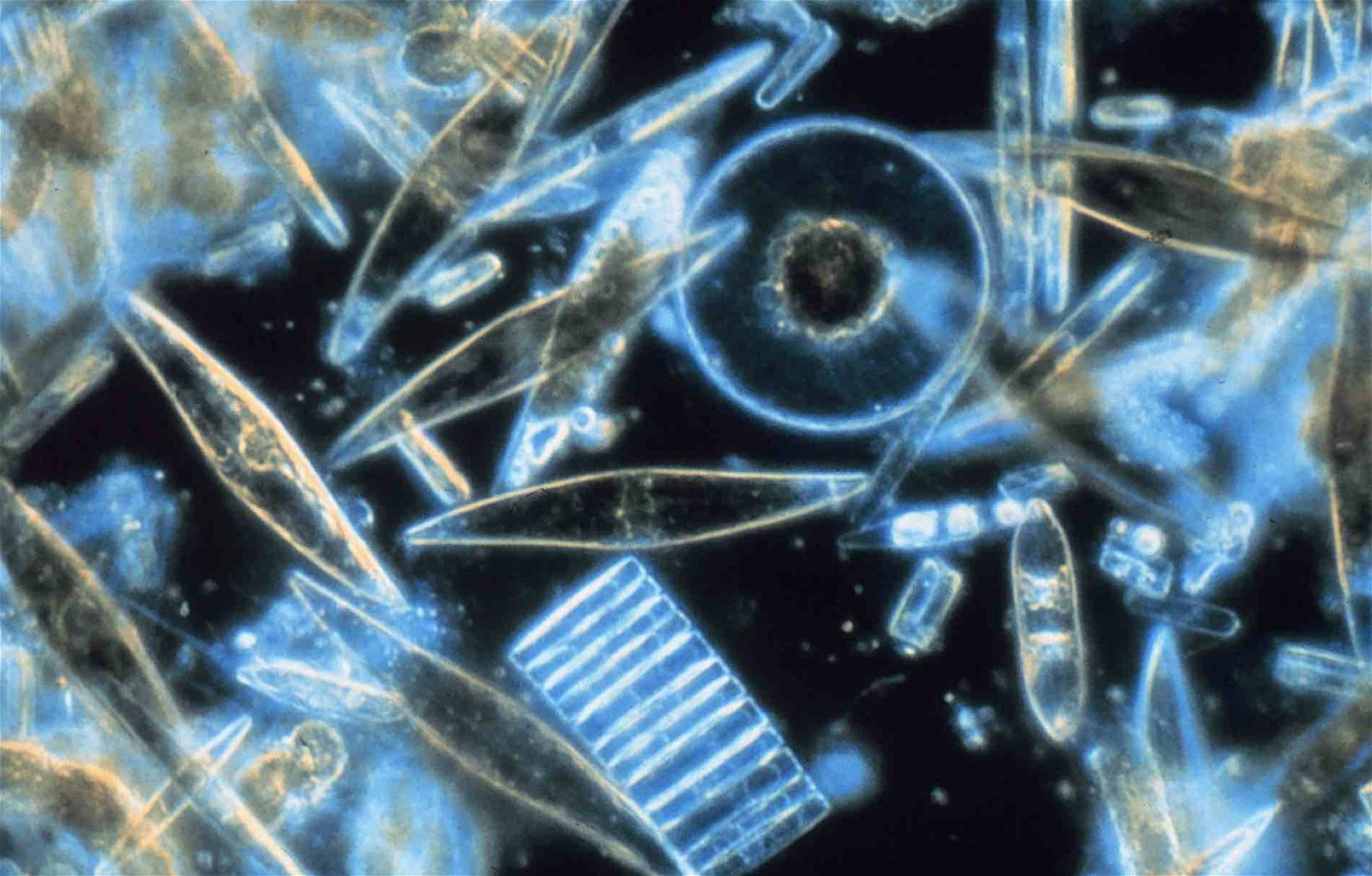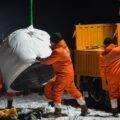A new study could potentially change our understanding of the relationship between ocean diatoms and carbon, which will have major impacts on what is known about the carbon cycle that drives many modern climate concerns.
Diatoms are single-celled plankton algae that are believed to generate a quarter of the world’s oxygen and break down a fifth of the world’s carbon dioxide through photosynthesis. Now, new research is showing that diatoms often feed on carbons directly, in addition to taking in carbon dioxide through the photosynthesis process.
Carbon Dioxide Absorption
While previous lab experiments have indicated that diatoms may not survive solely on photosynthesis, a team led by the University of San Diego is now the first to find practical evidence for this in Earth’s oceans.
The research team primarily compared the results of various lab-growing conditions to actual ocean samples. Out of 200,000 phytoplankton species, the team focused on a specific type of diatom known as Cylindrotheca clostridium. Due to its adaptability, this strain is widespread globally, making it ideal for understanding the global implications of their research.
While this diatom has long been known to nourish itself via photosynthesis, the team discovered that it also consumed organic carbon directly while in the ocean. Samples collected from across the globe revealed evidence of direct carbon consumption 70% of the time. Other marine plankton are known to engage in either photosynthesis alone, known as photoautotrophy; consumption of organic matter alone, a process called heterotrophy; or finally, mixotrophy, some combination of both.
However, C. closterium has potentially overturned biologists’ existing understanding of its metabolic process, given that the samples showed evidence that the remaining 30% of the time carbon was broken down, the process was divided between 21% photoautotropy alone and just 8% heteroautotropy.
Resilient Algae May Have an Upside
This may be mixed news for ocean ecosystems and the carbon cycle, as the algae’s resilience increases the marine food supply but complicates its relation to carbon dioxide. Mixotropy holds the obvious advantage of any diversified nutrient stream; if conditions are poor for one source, the other remains as a fallback. Additionally, mixotropy is believed to increase the flow of carbon to larger organisms by roughly 35%.
However, mixotropic metabolism decreases the amount of carbon dioxide that the diatoms break down by 25%. It is some consolation that in half of the samples where the diatom operated on heterotropy, it appears to have been a result of an extremely low concentration of carbon dioxide being available in the environment. Carbon dioxide, therefore, remains a preferred source of sustenance for the diatom.
Two further discoveries aided scientists in better understanding how this discovery fits into the ocean ecosystem. The first is that diatoms exhibiting this behavior of both consuming the carbon directly and utilizing photosynthesis are increasing in mass much more rapidly than those relying on photosynthesis alone. This rapid mass growth is welcome news as diatoms are shown to accumulate high amounts of lipids, making them useful for biofuels. The second is that specific strains of bacteria may be responsible for feeding the carbon to the diatoms.
Understanding Ocean Ecosystems
A novel methodology used by the research team applied highly detailed models of specific organisms’ metabolic processes, genome-scale metabolic models (GEMs), to the global scale. Their work created “the largest diatom metabolic model to date,” according to study author Manish Kumar. They began with GEMs, featuring information such as all biochemical reactions inside the diatom and more. Then, they applied constraints using global gene expression data collected by the TARA Ocean Expedition. Researchers involved suspect that they are the first to apply such a process.
While C. closterium may be globally present, exactly how much mixotrophy occurs in the Earth’s oceans remains a significant question. Developing further insights into these metabolic processes is going to be essential in untangling the marine food web and carbon cycle.
The team sees this as a new beginning in understanding our global carbon cycle. In 2016, they developed a GEM for the diatom Phaeodactylum tricornutum. Since then, they have developed GEMs for even more diatoms, Fragilariopsis cylindrus and Thalassiosira pseudonana. That progress in modeling provides an even broader basis for continuing research on diatoms and carbons.
By looking at the organisms that produce so much of our oxygen and absorb an extraordinary amount of carbon dioxide globally, we can better understand the cycle that concerns so many. As the many nuanced factors affecting carbon, and thereby climate, are understood, scientists and engineers can only gain a firmer grasp of how to address related concerns.
The team’s new paper, “Mixotrophic growth of a ubiquitous marine diatom,” by Manish Kumar, et al, recently appeared in Science Advances.
Ryan Whalen is a writer based in New York. He has served in the Army National Guard and holds a BA in History and a Master of Library and Information Science with a certificate in Data Science. He is currently finishing an MA in Public History and working with the Harbor Defense Museum at Fort Hamilton, Brooklyn.

